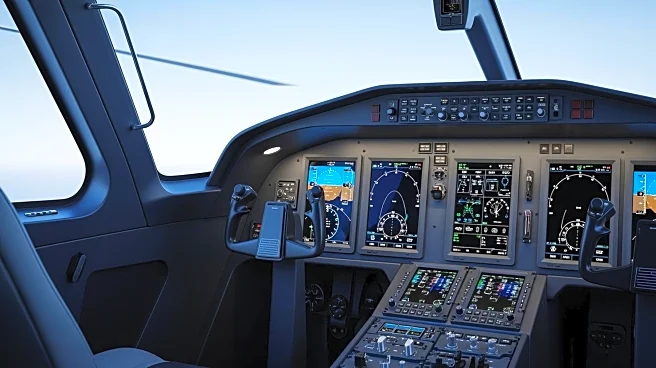What's Happening?
In response to a tragic crash that killed 67 people, lawmakers are advancing the ROTOR Act to improve aircraft visibility and safety. The legislation mandates the use of Automatic Dependent Surveillance-Broadcast
(ADS-B) technology for all aircraft, including military ones on non-combat missions. This move aims to close loopholes that previously allowed military aircraft to operate without broadcasting their location. The ROTOR Act also calls for safety reviews at major airports and increased coordination between the FAA and the Department of Defense.
Why It's Important?
The ROTOR Act addresses critical safety concerns in aviation, particularly the need for comprehensive tracking of all aircraft to prevent collisions. By requiring ADS-B technology, the legislation enhances situational awareness for pilots and air traffic controllers, reducing the risk of accidents. This initiative reflects a commitment to improving aviation safety standards and protecting lives. The act's provisions for better coordination between agencies further strengthen the regulatory framework, ensuring that safety protocols are consistently applied and monitored.
What's Next?
The ROTOR Act is set to be reviewed by the full Senate following its approval by the Senate Commerce, Science and Transportation Committee. If passed, the legislation will require aircraft operators to equip their fleets with ADS-B technology by 2031. The act also mandates safety audits and the development of next-generation collision avoidance systems. Stakeholders, including aviation safety advocates and military officials, will likely engage in discussions to ensure the effective implementation of these measures.
Beyond the Headlines
The ROTOR Act highlights the ethical responsibility of lawmakers to address safety gaps in aviation. It underscores the importance of transparency and accountability in regulatory practices, particularly when public safety is at stake. The bipartisan support for the act reflects a shared commitment to preventing future tragedies and fostering a culture of safety within the aviation industry.












